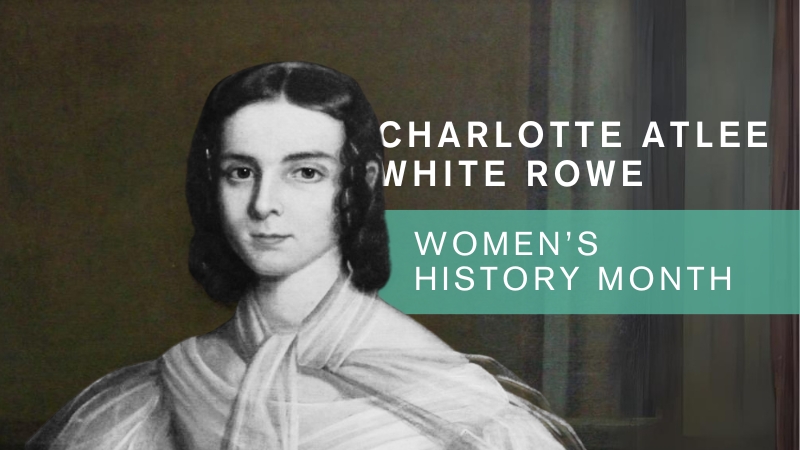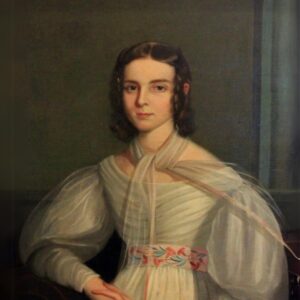
Women’s History Month reminds us of stories that have been lost throughout time, women whose history was forgotten – Stories like that of Charlotte Atlee White Rowe – the first American woman to be officially appointed as a missionary by any denomination or mission agency. This intelligent, passionate, and financially astute woman persevered through loss, rejection, and controversy to prove that women are just as capable of leadership in Christian mission as their male counterparts.
 Charlotte was born on July 13, 1782, to Judge William Atlee and Esther Sayre. After the death of both parents by the age of 11, she was then raised by her older sister, Elizabeth, in Massachusetts.
Charlotte was born on July 13, 1782, to Judge William Atlee and Esther Sayre. After the death of both parents by the age of 11, she was then raised by her older sister, Elizabeth, in Massachusetts.
She married Nathaniel Hazen White in 1803, and they had a son. Tragedy struck Charlotte again when she lost her husband in 1804 and her son in 1805. She moved to Haverhill, where she attended a Baptist church and was baptized. Influenced by a missionary uncle and several church-supported mission activities, Charlotte felt the call to serve.
In 1815, she applied with the American Baptist Board of Foreign Missions to be a missionary in Burma. This stirred controversy because only ordained men became appointed missionaries at the time. However, since their constitution’s definition of “missionary” didn’t clarify gender, the board agreed to appoint her as a companion to the wife of missionary George Henry Hough, who was traveling from India to Burma [Myanmar]. When the board wouldn’t fund her, she paid her own way.
They arrived in India in 1816, and while waiting to travel to Burma, Charlotte met and married Rev. Joshua Rowe, a widowed English missionary with the Baptist Missionary Society (BMS). She petitioned to become a BMS missionary, but she was denied. Undeterred, they moved north to Digah, where they created and managed several Hindi-speaking co-ed, all-girl schools and a church. After learning Hindi, Charlotte wrote a Hindustani-language spelling and grammar book. She empowered women by training them as teachers in all-girl schools. Teaching natives to read in their own language was controversial because it was speculated to potentially threaten English colonial rule. Charlotte persisted in teaching and empowering women teachers, raising funds through sponsorship from donors.
The married couple worked for seven years until Joshua died in 1823, leaving Charlotte to manage the ministry and their family. Charlotte continued her self-funded work for three more years and then traveled to England to ask for financial support to continue the ministry. BMS again denied her petition to be appointed as a missionary.
She returned to the U.S. in 1829 with her youngest three children, twins Charlotte and Esther, and her son Judson. While in the U.S., she founded a girl’s school in Philadelphia, taught at Lowndesboro Academy, Alabama, and eventually became the Principal of Strasburg Female Seminary, serving alongside her daughter Charlotte, an assistant teacher. In addition to teaching, she wrote for a newspaper under the pseudonym “Honesta” about her experiences in global mission. Outliving her twin daughters and son, Charlotte died in 1863 on Christmas Day at the age of 81.
Charlotte challenged gender inequality, empowered women, and opened the door for future generations, for both single and married women, to be appointed as missionaries. Women global servants’ stories today testify to the impact of Charlotte’s tenacity and servant leadership in global mission.